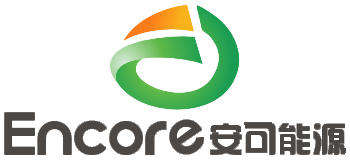- English
- Español
- Português
- русский
- Français
- 日本語
- Deutsch
- tiếng Việt
- Italiano
- Nederlands
- ภาษาไทย
- Polski
- 한국어
- Svenska
- magyar
- Malay
- বাংলা ভাষার
- Dansk
- Suomi
- हिन्दी
- Pilipino
- Türkçe
- Gaeilge
- العربية
- Indonesia
- Norsk
- تمل
- český
- ελληνικά
- український
- Javanese
- فارسی
- தமிழ்
- తెలుగు
- नेपाली
- Burmese
- български
- ລາວ
- Latine
- Қазақша
- Euskal
- Azərbaycan
- Slovenský jazyk
- Македонски
- Lietuvos
- Eesti Keel
- Română
- Slovenski
- मराठी
- Srpski језик
Lithium polymer battery history
2023-05-12
Lithium Polymer Battery History
2023-5-12
Lithium ion polymer batteries have evolved from lithium-ion batteries. The main difference is that the electrolyte of lithium salts in batteries is carried by solid polymers such as polyethylene glycol or polyacrylonitrile, rather than organic solutions used in lithium-ion batteries. Lithium ion batteries have the advantages of lower manufacturing costs, more flexible packaging shape selection, reliability, and durability compared to lithium-ion batteries. The disadvantage is that its charging capacitance is small. Lithium polymer batteries first appeared in consumer electronics around 1995.
The commercial lithium-ion batteries produced today are packaged in elastic soft film laminated packaging, which is different from cylindrical lithium-ion batteries with metal hard shells. The hard shell of lithium-ion batteries needs to provide pressure to fix the insulator and electrode together, while lithium polymer packaging does not require such pressure (most do not) because the electrode plates and insulators are stacked on top of each other. Due to the lack of a metal hard shell, this battery pack can reduce its weight by 20% compared to the hard battery itself.
The voltage of lithium-ion batteries varies between 2.7 volts (discharged) and approximately 4.23 volts (fully charged). To prevent overcharging, the voltage of each lithium-ion battery should be limited to 4.235 volts or less when packaged in series.
In the early stages of development, lithium-ion batteries have the problem of high internal resistance. Other limitations include longer charging time and lower maximum discharge capacity compared to existing batteries. In December 2007, Toshiba announced a new design that could charge faster. This product is expected to significantly change the market structure of existing consumer electronics, power tools, and electric vehicles when it is launched in May 2008. More recent developments have led to an increase in the maximum discharge current from around twice the original capacity (in ampere hours) to 65 or even 90 times, which in turn has also achieved the goal of fast charging.
Lithium ion batteries also have a longer lifespan. In recent years, it has been claimed that batteries can complete 1000 repeated charging and discharging cycles before declining to 80% of their capacity, which is better than the 300-500 cycles of lithium-ion batteries. However, it is emphasized that 100% complete discharge loss is the greatest. According to the manufacturer's maintenance instructions, if only 85% of the discharge is left with some margin each time, the attenuation rate will further slow down, and can reach more than 5000 cycles under such usage conditions, And another type of lithium battery, "thin film lithium battery," has a cycling capacity of over 10000 cycles.



